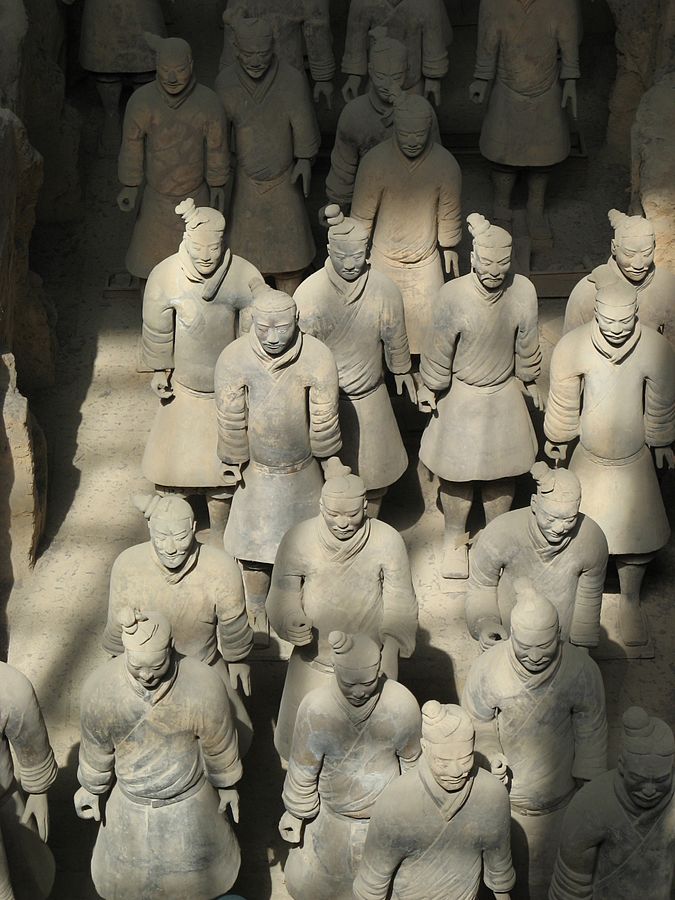


|

|
Pit 1, Lishsan Necropolis, Xi'an
When Qin Shihuangdi, the first emperor (221 - 210 BC) of China, constructed his great necropolis at Lishan, he clearly intended to rule in death, much as he had ruled in life. The emperor's coffin lies buried underneath a spectacular artificial mountain of earth, some 165 ft high (it would have been even taller in antiquity) and nearly one mile in circumference. The tomb is said to have taken 700,000 people 36 years to construct (Eyewitness Travel Guide, p. 169). Within it, according to the Han Records of the Grand Historian, the emperor had installed a scale model of the empire with rivers of flowing mercury and a pearl-studded ceiling to represent the stars of the nighttime sky. This kingdom-in-death was guarded by an army of thousands of life-sized terra-cotta warriors, seen here as they were reconstructed by archaeologists following their discovery in 1974
Pit 1 lies 1200m (three-fourths of a mile) east of the great burial mound, which itself has never been excavated. Qin Shihuangdi had unified China (or, more properly, created China by conquering and absorbing the other Warring States into his own state of Qin) by 221 BC, ruling as emperor from then until his death in 210 BC. His son and successor, Er Shi (210 - 207 BC), ruled for only three years until a massive peasant rebellion sacked the capital and inaugurated the Han Dynasty.

|

|